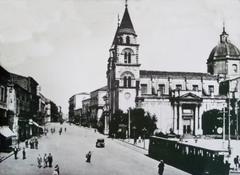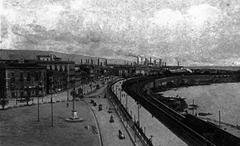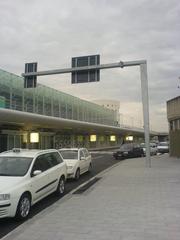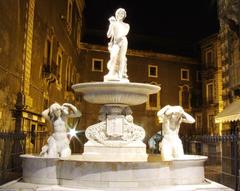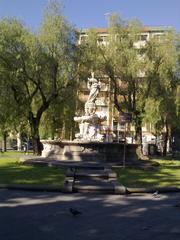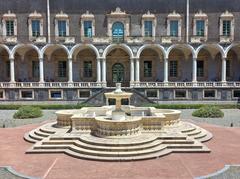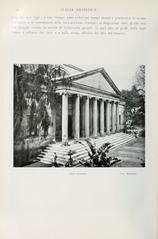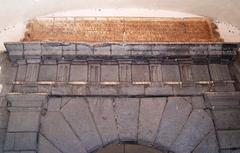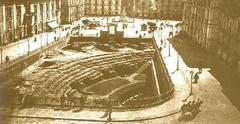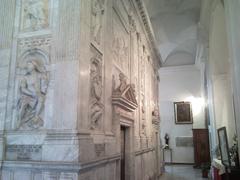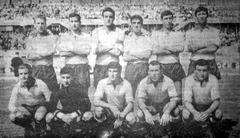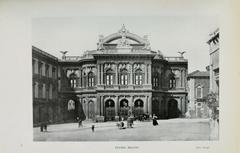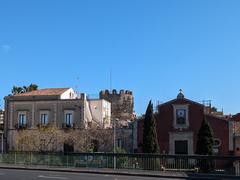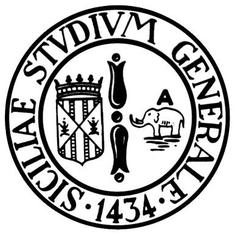
San Benedetto Catania: Visiting Hours, Tickets, and Historical Sites Guide
Date: 04/07/2025
Introduction
San Benedetto in Catania is a masterpiece of Sicilian Baroque architecture and a living testament to the city’s resilience, spirituality, and cultural vibrancy. Set on the UNESCO-listed Via Crociferi—a street renowned for its sequence of Baroque churches—San Benedetto reflects centuries of religious devotion, artistic achievement, and historical transformation. Whether you are an architecture enthusiast, history buff, or cultural traveler, this guide will provide you with everything you need to know: from the church’s origins and architectural features to current visiting hours, ticketing, tour options, accessibility, and practical travel tips.
Table of Contents
- Historical Overview
- Architectural and Artistic Highlights
- Cultural and Religious Importance
- Notable Events and Restoration
- Essential Visitor Information
- Travel Tips and Nearby Attractions
- Special Events and Visual Media
- FAQ: Common Questions
- Conclusion
- References and Further Reading
Historical Overview
Origins and Early Development
San Benedetto’s roots trace to 1334, when the Benedictine monastery was founded through the patronage of Alemanna Lumello. The nuns initially settled near the Pozzo degli Albani, between the ancient churches of the Raccomandata and San Pantaleone. Due to poor conditions, the community relocated several times before establishing itself in its current position on Via Crociferi in 1355—on land formerly home to the temple of Aesculapius. Some sources note that the monastery was built atop the ruins of the church of St. Stephen the Martyr, dating to 679 AD (benedettinecrociferi.it; monasterosanbenedettocatania.it).
Destruction and Baroque Reconstruction
The devastating earthquake of 1693 nearly obliterated the medieval monastery, with only five of sixty nuns surviving and the buildings reduced to rubble (benedettinecrociferi.it). The surviving nuns, with help from local clergy, began rebuilding as part of Catania’s broader Baroque revival. Construction of the new complex began in 1708 and spanned several decades, guided by architects such as Giuseppe Palazzotto and with façade input by Giovanni Battista Vaccarini. Artisans and artists, including Giovanni Tuccari and Paolo Battaglia, contributed to the church’s interiors and decorative program (spottinghistory.com).
Architectural and Artistic Highlights
Baroque Façade and Exterior Features
San Benedetto’s façade, designed in the exuberant Sicilian Baroque style, incorporates local white limestone and volcanic stone, creating striking contrasts. Key features include ornate pilasters, dynamic symmetry, and elaborate sculptural decorations (e-a-a.com). The iconic Arco di San Benedetto, built in 1704, spans Via Crociferi, connecting the monastery’s buildings and symbolizing the Benedictine order’s influence (evendo.com).
Angel’s Staircase (Scalinata dell’Angelo)
The church entrance is marked by the Angel’s Staircase, a marble masterpiece flanked by statues of expressive angels and enclosed by intricate wrought-iron railings. The wooden entrance doors, carved with scenes from St. Benedict’s life, invite reflection before entering the sacred space (historyof.eu).
Interior Frescoes and Main Altar
Inside, a single nave is covered in vibrant ceiling frescoes by Giovanni Tuccari, Sebastiano Lo Monaco, and Matteo Desiderato, depicting the life of St. Benedict and biblical episodes. The main altar, crafted from polychrome marble and adorned with semiprecious stones, silver, and gold-patinated bronze, centers on the symbol of the immolated Lamb of God (spottinghistory.com; historyof.eu).
Side Chapels and Artistic Treasures
San Benedetto’s side chapels are home to paintings and sculptures by notable Sicilian artists:
-
Right Nave:
- Immaculate Conception by Sebastiano Lo Monaco
- Martyrdom of San Placido (fresco remnants)
- King Totila before St. Benedict by Michele Rapisardi
-
Left Nave:
- “Tobiolo and the Angel” by Matteo Desiderato
- “Martyrdom of Sant’Agata” (anonymous, 1726)
- Altar of the Most Holy Crucifix with a crucifix by Giulio Gallo (1685)
These works highlight both artistic mastery and Benedictine devotion.
Covered Bridge and Monastic Complex
The complex includes the main and minor abbeys, connected by a covered bridge spanning Via Crociferi. This bridge allowed cloistered nuns to move between buildings privately and is a unique aspect of Catania’s ecclesiastical architecture (historyof.eu).
Integration with the Urban Fabric
San Benedetto sits among other Baroque masterpieces along Via Crociferi, forming a UNESCO World Heritage ensemble that exemplifies the Baroque ideal of theatrical, immersive environments (wikipedia; e-a-a.com).
Cultural and Religious Importance
San Benedetto is an active cloistered monastery where Benedictine nuns uphold centuries-old traditions, including perpetual adoration of the Blessed Sacrament (monasterosanbenedettocatania.it). The church remains a hub for religious ceremonies, processions, and feasts, and plays a vital role in Catania’s spiritual and social life. Its survival through the anti-clerical reforms of 1866 and during World War II underscores its resilience and enduring importance (benedettinecrociferi.it).
Notable Events and Restoration
San Benedetto has endured significant challenges, notably the 1693 earthquake and World War II bombing, which caused damage to the façade and vault (spottinghistory.com). Restoration between 1943 and 1949, led by Armando Dillon, returned the church to its former glory. Archaeological excavations have revealed the remains of a Roman domus beneath the present-day structure, adding further historical depth (visitcatania.co).
Essential Visitor Information
Location and Access
San Benedetto is located at Via Crociferi, a short walk from Piazza del Duomo and other central Catania landmarks (Lonely Planet). The area is pedestrian-friendly and accessible on foot, by public transport, or with limited car parking nearby.
Visiting Hours and Tickets
- Usual Opening Hours: Tuesday to Sunday, 9:00 AM–1:00 PM and 3:00 PM–6:00 PM. Closed on Mondays and public holidays. Hours may change during religious events (The Tourist Checklist).
- Admission: Entry to the church is typically free; donations are appreciated. Guided tours (including monastery cloisters and special areas) usually require a ticket priced €5–€10. Advance booking is recommended during peak seasons.
Guided Tours
Guided tours, available in Italian and English, provide in-depth insight into San Benedetto’s history, art, and religious significance. Tours last about 45–60 minutes and can be booked online or at the entrance.
Accessibility
The church is partially accessible for visitors with mobility impairments. Some historic areas, including upper floors and the bridge, may be difficult to access. A side entrance near Piazza Asmundo #9 offers wheelchair access to the main nave. Visitors are advised to contact staff in advance for specific needs.
Dress Code and Visitor Etiquette
Modest dress (covering shoulders and knees) is required. Silence is expected during services and when nuns are present. As an active monastery, respect for religious observances is essential.
Photography
Non-flash photography is permitted except during services or in certain cloistered areas. Always check signage and ask staff if unsure.
Travel Tips and Nearby Attractions
- Best Time to Visit: Spring (April–June) and autumn (September–October) offer the best weather and fewer crowds (Wanderlog).
- Nearby Attractions: Explore Via Crociferi’s other Baroque churches—San Giuliano and San Francesco Borgia—plus the Roman Theatre, Museo Belliniano, and local markets.
- Food & Refreshments: Cafés and trattorias on Via Etnea and Piazza Università serve local specialties.
- Safety: The historic center is generally safe; exercise normal precautions.
- Shopping: The monastery shop offers religious items and local crafts.
Special Events and Visual Media
San Benedetto hosts special Masses and concerts, particularly on Saint Benedict’s feast days (March 21 and July 11). During these events, some areas may be restricted. For photography, the Arco di San Benedetto and Angel’s Staircase are recommended spots. High-quality images and virtual tours are available on official websites, with SEO-optimized alt tags for accessibility.
FAQ: Common Questions
Q: What are the visiting hours for San Benedetto?
A: Usually Tuesday–Sunday, 9:00 AM–1:00 PM and 3:00 PM–6:00 PM; closed on Mondays and public holidays.
Q: Is there an entrance fee?
A: Church entry is free; guided tours and monastery access may require a ticket (€5–€10).
Q: Are guided tours available?
A: Yes, in Italian and English. Advance booking is recommended.
Q: Is the site wheelchair accessible?
A: Partially—main nave accessible via side entrance; some areas have stairs.
Q: Can I take photos inside?
A: Non-flash photography is permitted except during services or in designated areas.
Conclusion
San Benedetto is not just a monument, but a living symbol of Sicilian culture, faith, and artistry. Its Baroque architecture, artistic treasures, and active monastic life encapsulate the spirit of Catania’s past and present. Plan your visit to discover the harmonious blend of history, art, and spirituality that makes San Benedetto one of Sicily’s must-see attractions. For the best experience, check current hours, consider joining a guided tour, and respect the sacred atmosphere during your visit.
Download the Audiala app for up-to-date guides, audio tours, and real-time event information. Follow us on social media for travel inspiration and tips!
References and Further Reading
- San Benedetto Catania: Visiting Hours, Tickets, and Historical Guide, 2025, Benedettine Crociferi
- San Benedetto Church, Spotting History, 2025
- Monastero San Benedetto, Official Site, 2025
- San Benedetto, Comune di Catania Tourism, 2025
- Architectural Highlights of San Benedetto, History of, 2025
- San Benedetto and Catania Baroque Architecture, e-a-a.com, 2025
- Around Catania - Church of Benedictine and Monastery, 2025
- The Go Guy: Best Things to Do in Catania, 2025
- US Trip: Church of Saint Benedict, 2025
- Wanderlog - Church of Saint Benedict
- Evendo - Arco di San Benedetto
- Lonely Planet - Arco di San Benedetto
- The Tourist Checklist - Things to Do in Catania
- Wikipedia - San Benedetto, Catania


